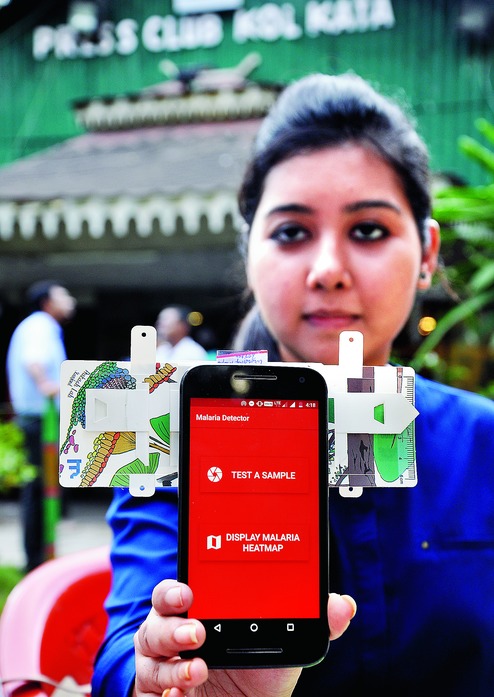Two aspiring engineers have developed an app-based system to detect malaria in a blood sample in less than a minute.
The detection involves a multi-step process that starts with the collection of a person’s blood sample. The slide containing the blood sample has to be inserted into a foldscope – a small microscope made of folded paper and a microlens.
The foldscope was developed by Manu Prakash, who teaches bioengineering at Stanford University.
Prakash’s lab sent two prototypes to the Calcutta researchers. The foldscope then has to be fitted to a smartphone, whose camera helps magnify the sample. The magnified image is then transported to a server, where using an algorithm, malaria parasites, if any, are detected in less than a minute. The diagnosis is relayed back to the phone user and the findings archived.
Nilanjan Daw and Debapriya Paul, BTech final-year students of computer science and engineering at the Institute of Engineering and Management (IEM), Salt Lake, developed the system with the help of their teacher Nilanjana Dutta Roy and IIEST professor Arindam Biswas.
Picture by Anup Bhattacharya
source: http://www.telegraphindia.com / The Telegraph,Calcutta,India / Home> Calcutta / Thursday – October 19th, 2017
